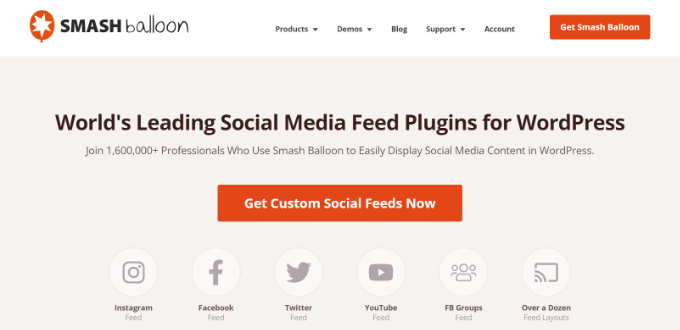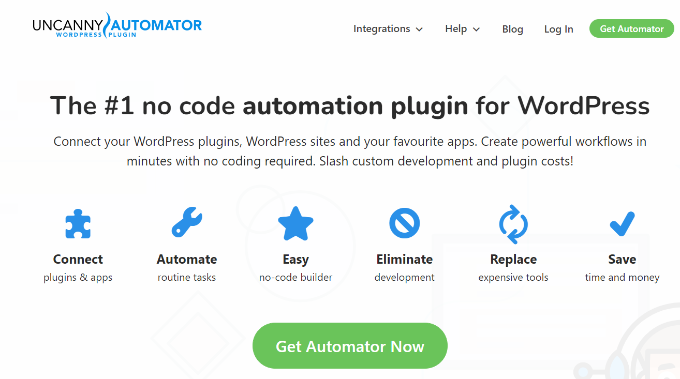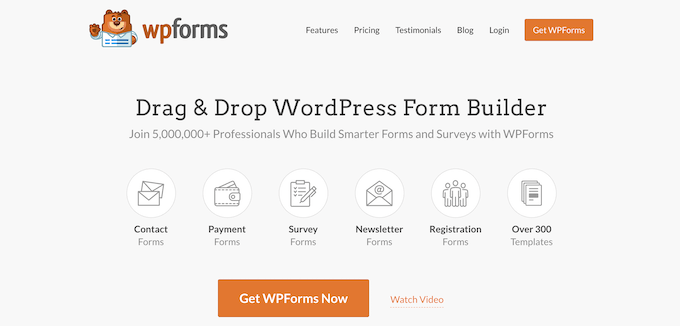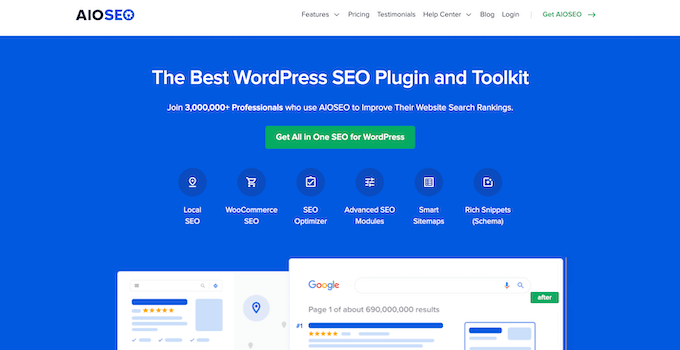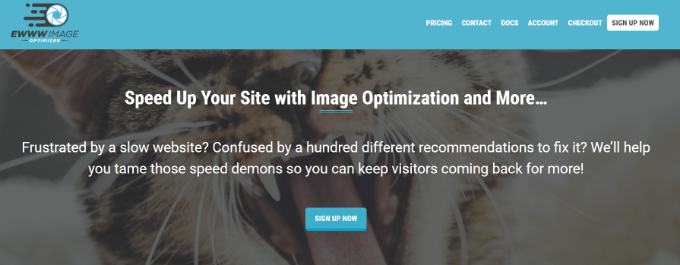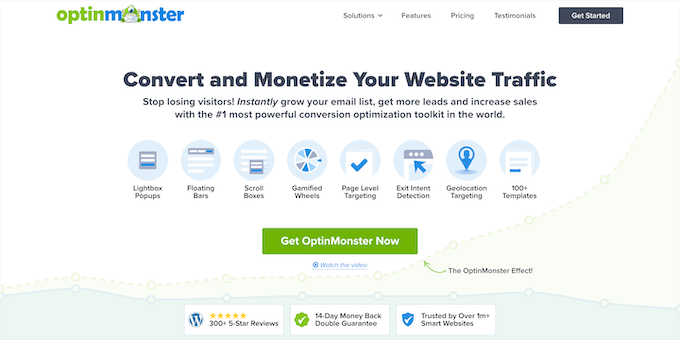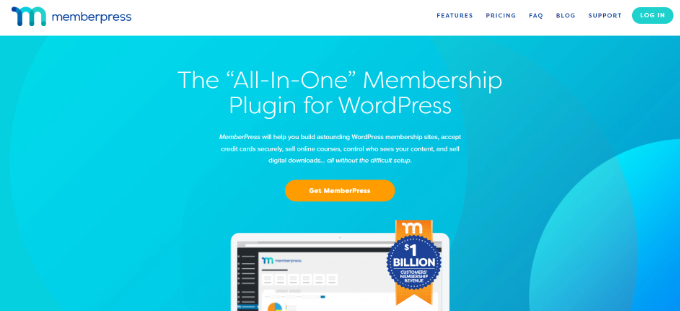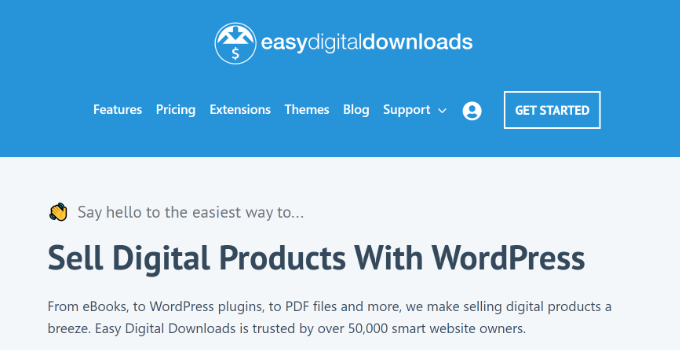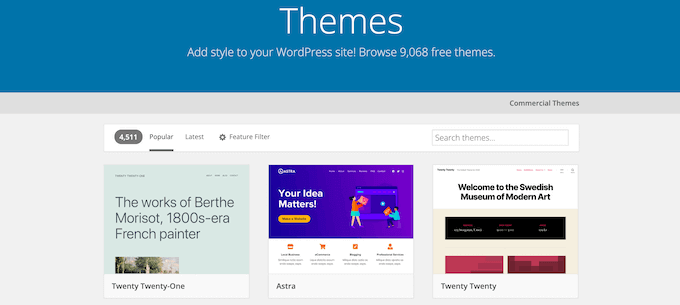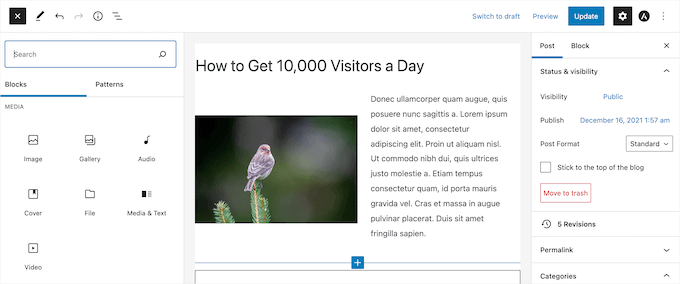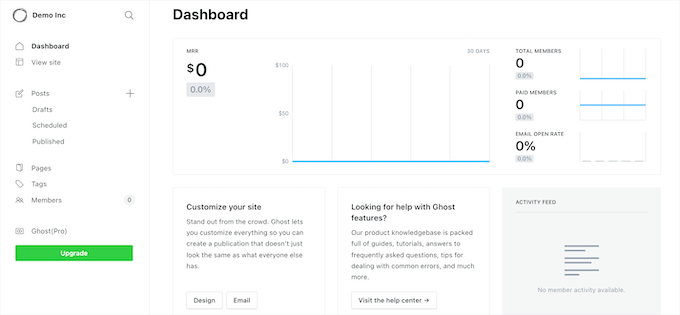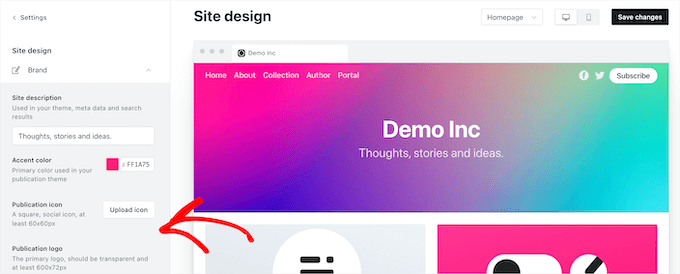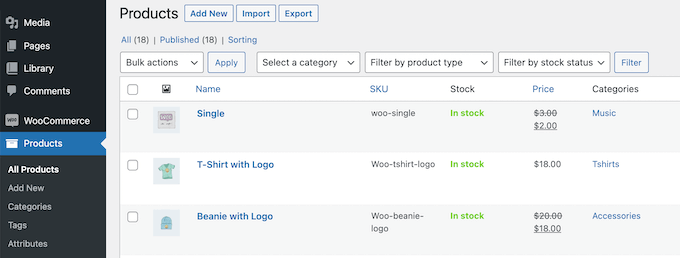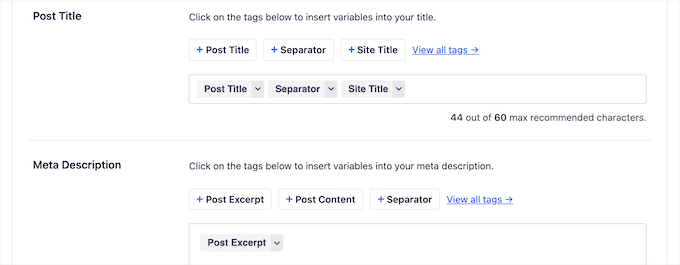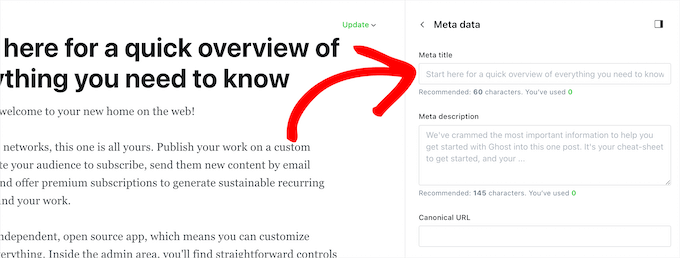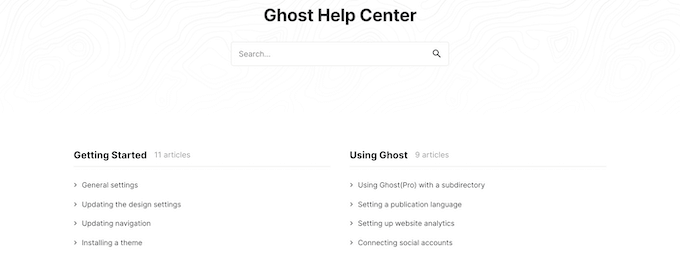Recently one of our readers asked us to share some WordPress market share data, usage stats, and research to help convince their boss on why they should use WordPress.
Even though WordPress is the most popular website builder in the world, sometimes popularity alone is not enough for users to make up their mind.
In this article, we have compiled an ultimate list of WordPress usage stats, market share research, and other data that will help you convince others to start using WordPress.

The Basics: What is WordPress?
WordPress is an open source software that allows users to make a website. It is available for download as a free software and can be installed on any WordPress hosting company.
It’s important not to confuse WordPress (the software) with WordPress.com which is a hosted solution. To learn more, see the difference between WordPress.com vs WordPress.org in our side-by-side comparison.

It all started when two users of a blogging software called b2/cafelog decided to take the software in a new direction. The idea was coined by Matt Mullenweg who was then joined by Mark Little and together they released the first version of WordPress on May 27, 2003.
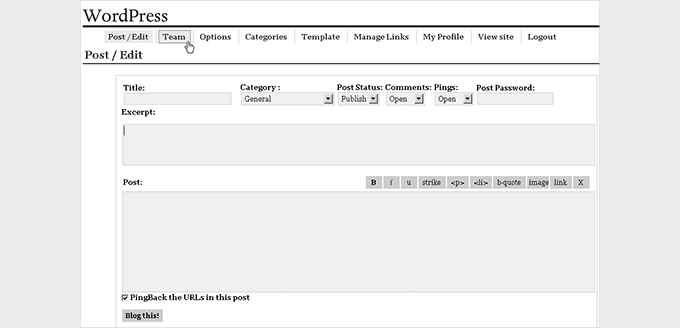
Since then, WordPress has evolved from a simple blogging software to a CMS, website builder, eCommerce platform, and more.
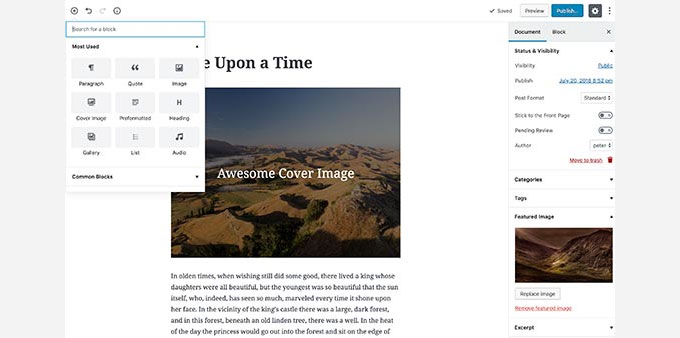
To learn more, see our article about the history of WordPress.
WordPress is a community software and thousands of users from all over the world have contributed to it by submitting code, fixing bugs, translating, testing, and helping others use it.
Let’s take a look at some WordPress stats and facts to see how WordPress is helping people do great things on the internet.
How Popular is WordPress?
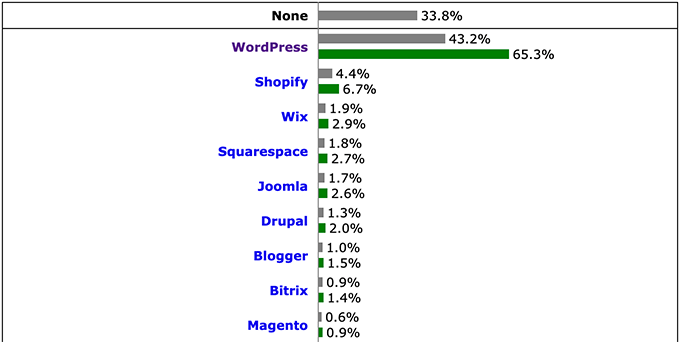
WordPress is immensely popular and is used by millions of people all over the world. Here are some numbers to put things in perspective.
- WordPress powers more than 43% of all websites on the internet.
- It also holds nearly 65% of CMS market share. No other website builder software comes close.
- WordPress powers websites for big name brands including Disney, Sony, Facebook, and more.
- 38% of top 10,000 Websites are powered by WordPress.
- More than 22% of all new domain names in the United States are running WordPress.
- Each day more than 1000 new WordPress sites join the top 10 million websites tracked by W3Techs.com.
While these are impressive stats, the only way to truly understand the popularity of WordPress is to look at it relative to other popular content management systems.
For example Shopify is the second popular, but it’s only 1/10th the size of WordPress since it powers about 4.4% of all sites vs WordPress 43.2%.
Wix spends tens of millions in marketing, but it only powers 1.9% of all websites. Meaning WordPress is 22x more popular than Wix.
Other popular CMS all have under 2% market share each such as Squarespace (1.8%), Joomla (1.7%), Drupal (1.3%), Blogger (1%), and Magento at just 0.6%.
When it comes to popularity, there’s no comparison to WordPress. According to the usage statistics, WordPress market share is 3x larger than the usage of other 9 popular website builders and blogging platforms combined.
WordPress Plugins

The biggest reason behind WordPress’ popularity is its large plugin & extensions ecosystem.
Plugins are like apps for your WordPress website. You can install them to add new features to your site and extend its functionality. To learn more, see our guide on what are WordPress plugins and how do they work?.
Here are some mind-blowing facts about WordPress plugins, which show just how massive the WordPress ecosystem is.
- There are more than 59,000 free WordPress plugins on WordPress.org plugin directory alone.
- 9 of those plugins are installed on 5 million+ websites.
- 61 top WordPress plugins are installed on more than 1 million websites.
- The most popular eCommerce plugin, WooCommerce is installed on more than 5 million websites as per the WordPress plugin directory since it shows all count above that as 5 million +. According to W3Techs, WooCommerce market share is 8.8% of all websites making it more popular than Shopify for online stores and eCommerce sites.
- The popular WordPress form plugin, WPForms, is also installed on more than 5 million websites. According to Builtwith, it’s used by over 1.6% of the top 1 million websites. It’s the fastest growing form builder on the entire internet.
Our plugins stats are from the official WordPress.org plugin directory alone. Many plugin developers sell premium versions of their plugins from their own websites.
With a healthy plugins ecosystem, it means that you can add custom functionality to your website at a fraction of the cost of custom development.
There are free WordPress plugins available for just about every type of website functionality including contact forms, selling memberships, landing page builder, SEO optimization, and more.
WordPress Themes

Themes control the appearance of a WordPress website. These are WordPress specific website design templates that you can install on your website to change its look.
There are thousands of free and paid WordPress themes available offering WordPress users an endless combination of design, layout, color schemes, and features.
- Themes were first introduced with WordPress 1.5 back in 2005, with the first new default WordPress theme called Kubrick
- Just like plugins, there are both free and paid WordPress themes that you can install.
- WordPress.org’s free theme directory has more than 9,100 free WordPress themes.
- According to Builtwith, Divi by Elegant Themes is the most popular theme used by 6% of websites analyzed by their service.
- Thousands of themes are sold by commercial WordPress theme shops with an average price of $40 per theme.
WordPress Hosting

WordPress is a self-hosted website building software. In other words, you need to have a web hosting provider to create a website with WordPress.
Due to it’s popularity, many hosting companies have added specialized WordPress hosting services to make it easier for small business owners to get started with WordPress.
Here are some popular WordPress hosting companies based on market share:
- Newfold Digital Group (4.9%) – this is a hosting conglomerate that includes brands like Bluehost, HostGator, Domain.com, and more.
- GoDaddy Group (4.2%) – this includes brands like GoDaddy, Media Temple, Pagely, and many more.
- WP Engine (2.3%) – one of the leading managed WordPress hosting companies on the planet.
- SiteGround (2.0%) – a premium WordPress hosting company that users love because of their top notch support. We use SiteGround to host WPBeginner site.
- Hostinger (1.2%) – an affordable WordPress hosting company that’s growing in international markets due to it’s cheap web hosting prices.
The data above is from W3Techs report and excludes other platforms like Amazon (AWS), Google Cloud, NameCheap, Automattic, and others. Our list above is representative of the reader polls on WPBeginner for popular web hosting.
WordPress Security

WordPress is the most commonly used CMS software in the world, which also makes it a common target of hacking attempts, DDOS attacks, malware, and trojans.
- According to Sucuri, a leading website security company, 83% of all CMS based websites that were hacked in 2017 were running WordPress. This number isn’t surprising considering that WordPress holds 65% of CMS market share.
- Sucuri also reported that 39% of hacked WordPress websites were using an outdated version of the software. That’s why you should always use the latest version of WordPress on your website.
- Nearly 50% WordPress sites are affected by a security vulnerability caused by an outdated or poorly coded WordPress plugin or theme
- Around 8% of WordPress sites were hacked due to a weak password.
You can make your WordPress site as secure as possible by following some basic security best practices. To learn more, see our complete WordPress security guide for step by step instructions.
Often the stats above cause WordPress to get a bad reputation, but the reality is that WordPress itself is not insecure. WordPress core goes through rigorous security audits, and it’s more secure than many other platforms out there.
The only fault WordPress has is that it’s popular which leads to stats like above.
WordPress Community

WordPress has a massive user base spread across all over the world. It is used by not just businesses, but also governments, schools and colleges, non-profits, and more.
As an open source project, WordPress is driven by a global community of users. This means that anyone can contribute to the project in many different ways.
- WordPress translation community has it fully translated into 56 languages, partially translated in dozens more.
- In 2017, WordPress communities around the world organized 128 WordCamp events, in 48 countries, and sold 39,625 tickets.
- In 2017, Local WordPress communities organized 4,379 meetups in 73 countries
- There are dozens of WordPress groups on Facebook, with WPBeginner Engage being the largest WordPress Facebook group with over 81,500 members.
If you want to contribute to WordPress, then see our guide on how to get involved with WordPress project.
The WordPress Economy

WordPress has a thriving multi-billion dollar ecosystem that creates thousands of jobs all over the world. This also includes freelancers, developers, and companies that sell WordPress related products and services.
- At the time of writing this article, freelancer.com website alone had 680,743 WordPress jobs posted out of these 700 were open.
- Thousands of WordPress jobs are currently open on many popular freelancing websites. You can always visit our Careers page to find WordPress jobs.
- Average hourly rate for WordPress developers can be anywhere between $20-$100 per hour depending on their expertise and job at hand.
- A custom WordPress theme with its own unique design and plugins can cost $10,000 and it may increase depending on project’s requirements.
- There are hundreds of small and large businesses, agencies, and developers selling WordPress related products. See our list of the most influential WordPress businesses and companies and what they do.
We hope this article helped you discover some new WordPress stats, facts, and interesting research. You may also want to see our article on the best domain registrar and best business phone services for small business.
If you liked this article, then please subscribe to our YouTube Channel for WordPress video tutorials. You can also find us on Twitter and Facebook.
The post WordPress Market Share: Usage Stats, Facts, & Research (2022) first appeared on WPBeginner.
January 09, 2022 at 07:33PM

